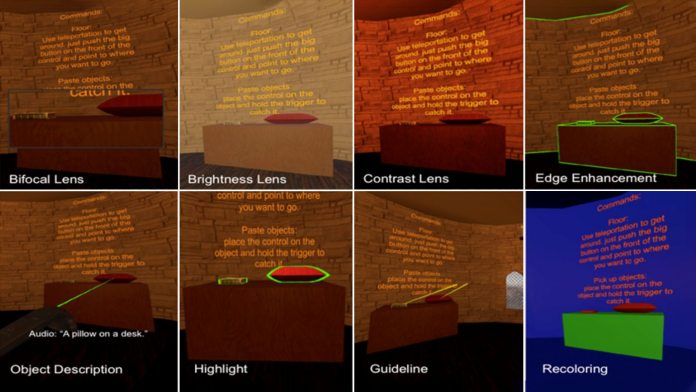Microsoft is looking to change that with its SeeingVR toolkit, which is designed to help Unity devs build more inclusive apps. The tool lets users implement a total of 14 filters to aid vision, with lenses, magnifiers, depth measurements, edge enhancements, text-to-speech, and brightness/contrast adjustments. The beauty of the tool is its ability to help a wide range of users. Those with severe vision impairments will certainly be a target, but it could simply yet people ditch glasses for a while. Though headsets like the Vive work for some without, it depends on the prescription. SeeingVR can plug into VR titles with extremely low effort, requiring no changes from the developer. If they wish, though, devs can implement alt text for objects for text-to-speech. They can also highlight important objects, add guidelines, or tie in Microsoft’s Seeing AI app for mobile.
An Essential Simplification
Creating accessible games can be a challenge. Basic features aren’t too hard to implement, but it can be difficult to imagine the world of a vision-impaired user. Ultimately, developers struggle to make titles work for everyone but keep the same level of difficulty and immersion. With SeeingVR, Microsoft appears to have done most of the thinking already. “Evaluation with 11 people with low vision completing a variety of tasks in VR (for example, menu selection, grasping objects, shooting moving targets) found that all participants could complete tasks more quickly and accurately when using SeeingVR tools as compared to the default VR experience,” said principal researcher Meredith Ringel Morris in a blog post. “All participants chose different combinations of the available tools, reinforcing the value of allowing flexibility and customization of low vision accessibility options.” You can read the full research paper here.




